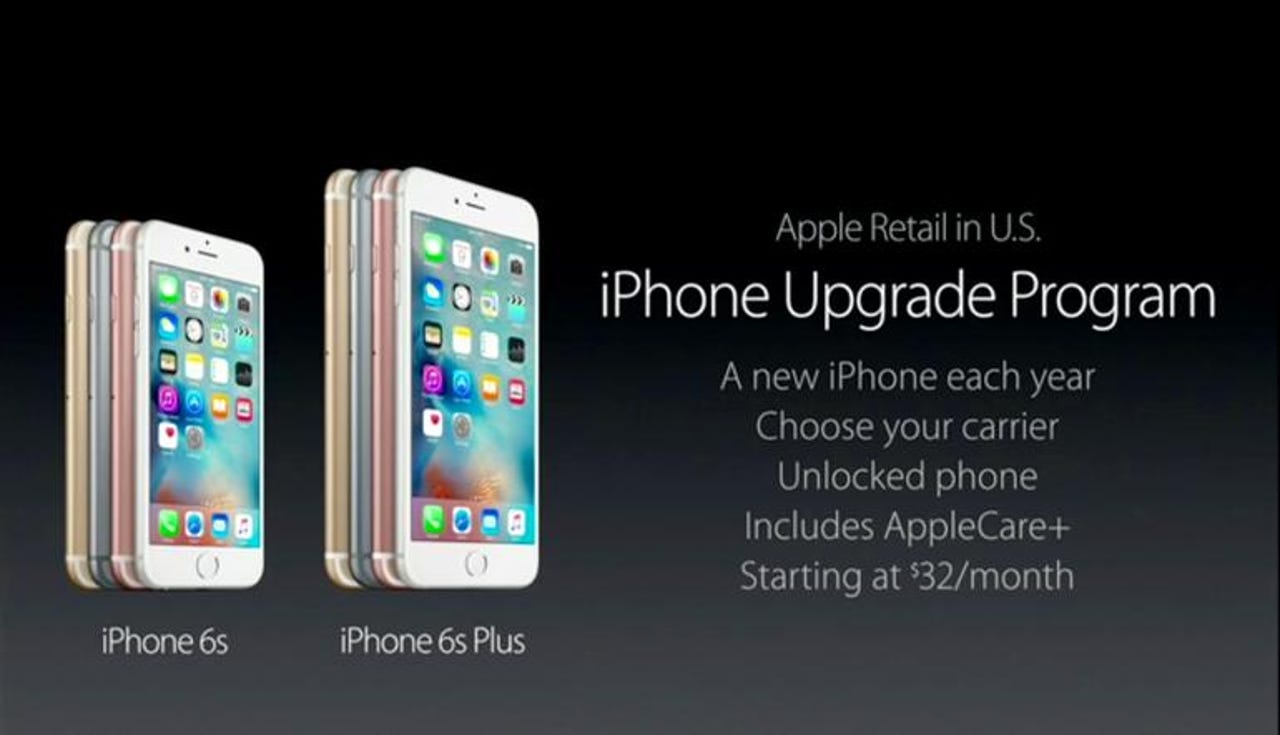Can Apple's iPhone 6s trade-in program shorten upgrade cycle?


Apple's trade-in program, unveiled along with the iPad Pro, iPhone 6s and revamped Apple TV, is likely to have the most staying power. What's unclear is whether the trade-in program will convince more people to swap their smartphones annually.
Sure, Apple's event in San Francisco featured a barrage of new technologies. And we could go on about things like the Apple Pencil, iPad Pro pricing and whether the iPhone 6s is worth the upgrade.
But a trade-in program starting at $32 a month that utilizes Apple's retail footprint, aims to take the customer relationship from carriers and ensures upgrades will have a more lasting impact.
In a nutshell, Apple is bundling Apple Care+ with an iPhone and leasing it to you. The cost is spread out over 24 months and after a year there's an option to swap for a new iPhone. The monthly payments are basically financed via a loan from Citizens Bank.
The Apple program rhymes with the installment plans being pushed by carriers. Wireless carriers, which traditionally sold two-year contracts, are pushing installment plans so they don't have to pay subsidies to smartphone manufacturers. In other words, the move to installment plans could hurt Apple, which sells its iPhone at a premium.
By taking over that installment relationship, Apple commoditizes carriers, encourages customers to shop around and locks in the relationship with the buyer. A person who signs up for a annual upgrade plan is basically acknowledging that he will likely be a iPhone customer for years to come.
Once you factor in the Apple Care subscription, Apple's pricing is roughly the equivalent of what you'd find at a carrier sans any discounting.
But the real aim here is that Apple needs to create a shorter upgrade cycle. The two-year upgrade cycle isn't going to even come close to enabling Apple to match its iPhone 6 upgrade bonanza. Meanwhile, the iPhone 6s has a better camera, but isn't a must-have upgrade.
Given Apple's situation, the financing model makes sense. If you evolve the model a bit you get to what Apple would really like: Tech buyers on an annual hardware subscription. This model makes even more sense as the rate of innovation in the smartphone market slows. Given the current smartphone specs, you can project three-year upgrade cycles going forward.
Canaccord Genuity analyst T. Michael Walkley noted:
As carriers continue to push customers away from subsidies extending upgrade cycles, Apple has found a way to reverse this trend by offering an installment plan with annual upgrades. We expect this to be a popular choice as consumers are already comfortable with installment plan purchases, but will watch for reaction by carriers to the proposal. The upgrade program includes a new iPhone each year, a choice of carriers, unlocked phone, AppleCare +, and pricing starts at $32.45/month which we expect is for the 16GB iPhone 6s vs. $27/month without this option. While this might create some conflict with carriers, we believe Apple is attempting to shorten the upgrade cycle versus the large installed based on consumers on 2-year iPhone plans.
If Apple's move is successful, it will be able to predict revenue into the future much better. Ultimately, I'm willing to bet that Apple aims for the hardware subscription model in other categories too. Annual upgrades could have advantages for tech buyers and certainly Apple.